Whenever a wing is used—whether on an airplane to generate lift or on a race car to create downforce—there’s a compromise to be made between the vertical force that it generates and the drag it creates. Ever since the dawn of aviation, plane designers have used moving wing surfaces to modulate the wing’s effect, but it’s still relatively rare to see moving wings on ground vehicles.
With winglets becoming increasingly popular on motorcycles, thanks largely to their adoption in MotoGP over the last few years and the proven benefits they bring in racing, a number of companies are investigating the possibility of moving winglets, allowing them to be adjusted either manually by the rider or automatically in response to the condition of the bike. We’ve seen patents from BMW for winglets that move both in pitch and roll, while Honda has explored the idea of wings that retract into the fairing when they’re not required and pop out when they are.
In terms of production bikes, Bimota has made vague references to electronically adjustable winglets on its new WSBK challenger, the KB998 Rimini, claiming they automatically move to stay at the ideal angle, but we’ve yet to see them in action and the company has been tight-lipped about details of the system. In theory it’s legal in WSBK, provided the homologated street version of the bike has the same setup, even though movable winglets are banned in MotoGP.
Kymco might not be the most obvious company to be developing a moving winglet system but the company has filed its own patent for self-adjusting winglets, illustrating them on the images showing the second-generation version of the brand’s SuperNEX electric concept bike, which debuted in 2022 but has yet to lead to a production version.
While that concept bike had conventional, fixed-position winglets, the patent shows a version that can alter the angle of those wings, rather like the diving planes of a submarine, to push the nose of the bike down when necessary. The document suggests the adjustments could be made manually from the cockpit at the rider’s behest, or be done automatically, following a preprogrammed map that increases the level of downforce when the front wheel starts to lift.
The automatic setting has the advantage of maximizing the winglets’ anti-wheelie property while minimizing their impact on top speed or economy. Unlike race cars, which use wings to generate downforce that helps add grip in corners, the primary function of the winglets on motorcycles is to hold the front wheel down during hard acceleration. When there’s plenty of grip, wheelies are the limiting factor for acceleration out of corners and on straights, and winglets help mitigate them—letting you put more power down before the nose starts to lift, and allowing the elimination of some of the TC fuel cuts. But on the flipside, they become a burden at high speed, when there’s no longer enough acceleration for wheelies to be an issue, by introducing drag that slows the bike’s ultimate velocity on straights.
Kymco’s solution is to simply connect the angle of the winglets to the bike’s inertial measurement unit, which monitors its pitch angle and tells when the front wheel is lifting. When it starts to wheelie, the system tells the wings to increase their angle of attack, with the adjustment being made by stepper motors at the stems of the winglets. If the wheel continues to rise, the winglet angle is made steeper still, while if it stabilizes or starts to drop, the angle of attack can be reduced. The result is that the wing can be flattened out to a low-drag position when it’s not needed, but leaps into action when it is required, giving all the performance upsides when it comes to acceleration but none of the penalties in terms of drag.
While the SuperNEX itself isn’t likely to reach production in the form seen in the 2022 concept, Kymco is getting close to launching its electric sportbike, having shown a near-production version of the RevoNEX roadster at last year’s EICMA show. The bike is the result of Kymco’s part-ownership and development partnership with LiveWire, using the same S2 Arrow platform as the LiveWire Del Mar, Mulholland, and Alpinista, but adding a key difference in the form of a simulated clutch and gear shifter to give riders an increased level of control and engagement.










/cloudfront-us-east-1.images.arcpublishing.com/octane/K5FNV7ONUVDXJJ2H5BIWUGBGTI.jpg)
/cloudfront-us-east-1.images.arcpublishing.com/octane/ODCLUBA22NBK7G57LPBSLSM7QU.jpg)
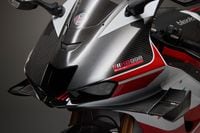



/cloudfront-us-east-1.images.arcpublishing.com/octane/HU4NUBCL3VAFZA75VYRCMAUHVM.jpg)
/cloudfront-us-east-1.images.arcpublishing.com/octane/OB43AZK7TRA6XLZL5WRDVW2TDA.jpg)
/cloudfront-us-east-1.images.arcpublishing.com/octane/5G44Y3FXWNFSTEQKCA355PXOPU.jpg)

/cloudfront-us-east-1.images.arcpublishing.com/octane/XRI4GTLCVBA5NESASCBIR5LYQI.jpg)
/cloudfront-us-east-1.images.arcpublishing.com/octane/EF7566PXARGMBAOMLWTECYL3LE.jpg)
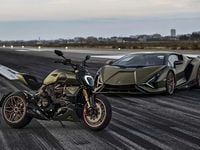
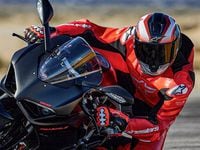

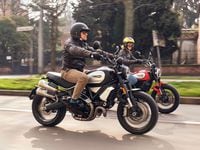
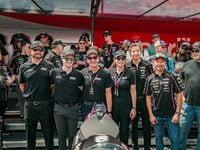
/cloudfront-us-east-1.images.arcpublishing.com/octane/3LASNXSWUZFFPISURDJF3OCWBU.jpg)
/cloudfront-us-east-1.images.arcpublishing.com/octane/2BHJKWUTBNBTLMQCKDNVEG6DKQ.jpg)
/cloudfront-us-east-1.images.arcpublishing.com/octane/MPHXIIV54NAU5L6E4SYZHCXVRM.jpg)



/cloudfront-us-east-1.images.arcpublishing.com/octane/WYXFHF4ZOBBTXELIZDB2FJXU64.jpg)
/cloudfront-us-east-1.images.arcpublishing.com/octane/MGVKP5VTNJHQ7FWNAHIWX4OHO4.jpg)
/cloudfront-us-east-1.images.arcpublishing.com/octane/6JEYTSIZQRHPJAVVPRLWZU63UM.jpg)
/cloudfront-us-east-1.images.arcpublishing.com/octane/XJU3VJZSDFEOVDBJTRXTTLTN5U.jpg)

/cloudfront-us-east-1.images.arcpublishing.com/octane/A6O3TEZF45BVFG2KKOUMPWEYM4.jpg)